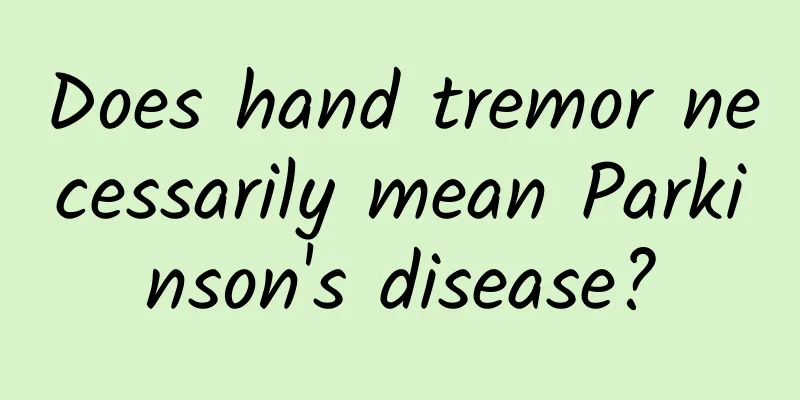How to prevent brain aneurysm rupture? JAHA: Insomnia, smoking and high blood pressure are risk factors!

|
Currently, more than 3% of adults worldwide have unruptured vascular malformations (brain aneurysms) in their brains. Among them, some patients with brain aneurysms will never have their blood vessels rupture, while about 2.5% of patients will have their blood vessels rupture, leading to subarachnoid hemorrhage. Subarachnoid hemorrhage refers to the rupture of blood vessels in the brain, and blood flows between the brain and the skull. This is a common hemorrhagic stroke. We know that smoking and high blood pressure are risk factors for cardiovascular disease and may also be associated with an increased risk of brain aneurysms. But what other modifiable lifestyle factors are associated with brain aneurysms? Screenshot source: JAHA Recently, a study published in the Journal of the American Heart Association, a journal of the American Heart Association, found that in addition to smoking and high blood pressure as potential risk factors for ruptured cerebral aneurysm and cerebral hemorrhage, insomnia may be another important risk factor. To explore whether various factors such as smoking, high blood pressure, coffee drinking, sleep, physical activity, body mass index, blood sugar levels, type 2 diabetes, blood pressure, and cholesterol levels are associated with ruptured brain aneurysms, the researchers included several studies with whole-genome data, including 6,300 patients with brain aneurysms and nearly 4,200 patients with aneurysmal subarachnoid hemorrhage, and compared them with more than 59,500 control participants to determine the genetic susceptibility to aneurysms. The researchers used Mendelian randomization analysis and found that: Insomnia was associated with a 24% increased risk of cerebral aneurysm and aneurysmal subarachnoid hemorrhage (RR = 1.24). The risk of cerebral aneurysm in smokers is three times that of non-smokers (RR=3.20). For every 10 mmHg increase in diastolic blood pressure, the risk of cerebral aneurysm almost doubled (RR=2.92). There is weak evidence that reduced physical activity, higher triglyceride levels, higher body mass index, and lower low-density lipoprotein cholesterol levels are associated with an increased risk of cerebral aneurysm and aneurysmal subarachnoid hemorrhage. "Rupture of a brain aneurysm is fatal, so it is important to understand the risk factors that may protect against rupture," said study author Professor Susanna C. Larsson of the Department of Cardiovascular and Nutritional Epidemiology at Uppsala University. "The association between insomnia and brain aneurysms has been largely unreported before, and the findings warrant further confirmation in future studies." The paper points out that the limitations of the study include that there was not enough information to fully analyze some of the risk factors. In addition, only participants of certain nationalities were included in the study, and the results may not be generalizable to people from different countries. The American Heart Association's scientific statement pointed out that the duration and quality of sleep have an impact on lifestyle and cardiometabolic health. Insufficient sleep, poor sleep quality, and sleep disorders are associated with a higher risk of hypertension. Therefore, treating patients with sleep disorders may bring clinical benefits, especially for patients with hypertension. Professor Larsson further pointed out: "Our research supports that people can modify or manage these risk factors to reduce the risk of ruptured brain aneurysms. We look forward to more research in the future to incorporate these risk factors into prevention plans and treatment methods." References [1] Ville Karhunen et al., Modifiable Risk Factors for Intracranial Aneurysm and Aneurysmal Subarachnoid Hemorrhage: A Mendelian Randomization Study (2021). Journal of the American Heart Association. 2021;0:e022277.DOI: 10.1161/JAHA.121.022277 [2] Insomnia may be a risk factor for highly fatal brain aneurysm rupture. Retrieved 3-NOV-2021, FROM https://www.eurekalert.org/news-releases/933200 [3] Insomnia may be a risk factor for highly fatal brain aneurysm rupture. Retrieved November 03, 2021, from https://newsroom.heart.org/news/insomnia-may-be-a-risk-factor-for-highly-fatal-brain-aneurysm-rupture |
<<: Where is Xinyang Maojian mainly produced? What is the aroma of Xinyang Maojian?
>>: What kind of tea is Maojian? Should Maojian be washed?
Recommend
What are the symptoms of uterine relaxation?
For women, pregnancy is a happy thing, but during...
The difference between black tea and green tea for women
It cannot be generalized whether it is better for...
Is it good for women to use tampons during menstruation?
Menstruation is something that happens to women e...
What is the meaning of Tiger and Wolf's Words? Where did Tiger and Wolf's Words come from?
Recently, I have seen many TV dramas talking abou...
Causes of private area eczema
Eczema in the private parts is quite common in ou...
Can I dance when I have my period?
Girls who learn to dance have to deal with dance ...
Brown discharge during ovulation
The blood produced by a woman's lower body ca...
What to do if you get angry during confinement
Confinement is a process that every mother needs ...
Is freshly squeezed juice really healthy?
The weather is getting hotter in summer, and all ...
What kind of underwear is good for breasts?
Underwear is a woman’s inseparable companion and ...
What anti-inflammatory medicine should I take for lip tattoo
Loving beauty is every woman’s nature, but many p...
Frequent fetal movements after pelvic entry
Pregnancy makes people feel very relieved and als...
Does pityriasis versicolor look like a flower? Who is most likely to get it?
Author: Wang Aiping, Chief Physician, Peking Univ...
What should I do if there is a big lump at the vaginal opening?
Women must be responsible for their own bodies an...
What are the tips for reducing belly fat after childbirth?
For most women, it is difficult to restore their ...









